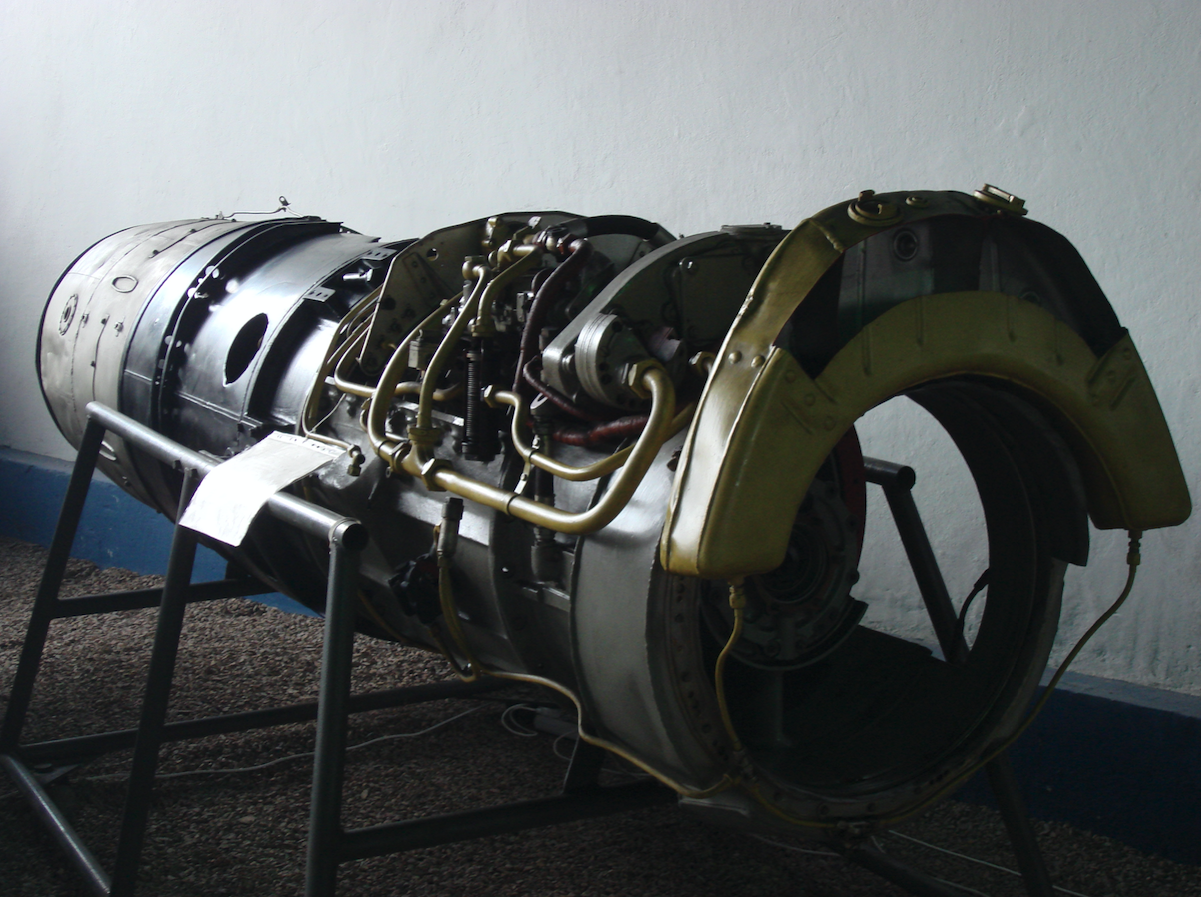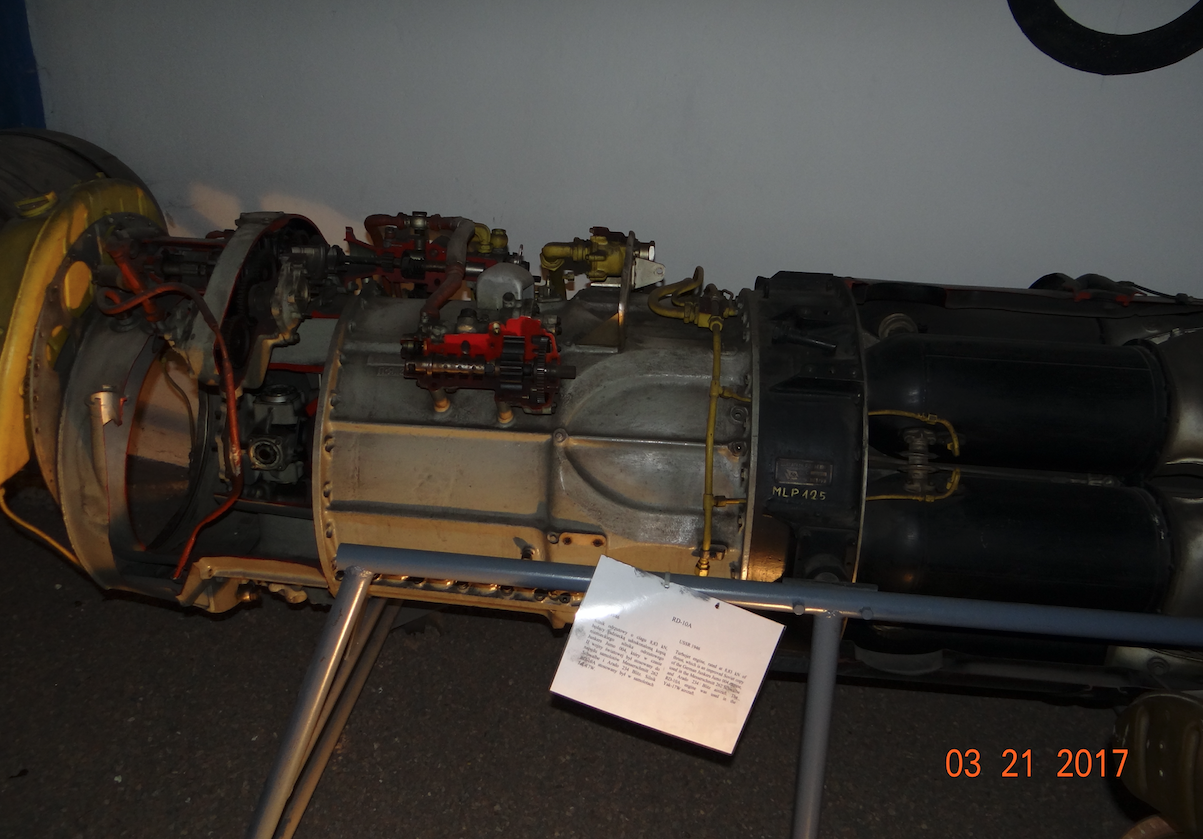Turbojet engine RD-10



During World War II, the CCCP paid little attention to the development of turbojet engines. The breakthrough came at the end of the war, when the Russians obtained several copies of the German Junkers Jumo-004 and BMW-003 engines, and some of the results of the experiments. Stalin ordered these engines to be copied and to start mass production. The engines received the designation Klimow RD-10 (Junkers Jumo 004) and RD-20 (BMW 003). In turn, in January 1945, aircraft design offices were ordered to develop airframes for these engines. These were the offices of Jakowlew, Ławoczkin, Sukhoj, as well as Mikojan and Guriewicz.
The Junkers Jumo 004 engine was produced in Germany from 1941. The engine was produced until the end of the war. About 6,000 of these engines were built in total. The engine powered the Me-262 and Ar-234 B planes. The Junkers Jumo 004 engine has a 9-stage axial compressor, 6 combustion chambers and a single-stage turbine.
The Yak-15 and MiG-9 planes were flown on the same day on April 24, 1946 and both entered mass production. The Yak-15 fighter was built in a small number, as a transition plane awaiting machines with much better performance. Note that this was in 1946, when there were already several successful turbojet engine designs with centrifugal and axial compressors in the UK and the US.
Junkers Jumo 004 engines, specifically its Jumo 004 B version. It was a single-flow, single-shaft turbojet engine with an axial compressor, with a thrust of 8.89 kN. The engines were produced at the factory in Dessau on the Elbe. The factory was taken over by the Russians and they kept the engine production under full supervision. As a result of the peace treaties, Germany was to be completely demilitarized, therefore the research and trials of the engines were transferred to the CCCP, to the Vladimir Klimov plant, where until now M-series piston engines were produced. The Russians took part of the German technical personnel with them. During the modernization works, the focus was on increasing engine thrust and extending its service life. The Russians, having raw materials previously unavailable to the Germans, relatively quickly extended the service life and slightly increased the engine thrust. Serial production of engines under the designation RD-10 was started at the plant in Ufa, 1,300 km east of Moscow. About 1,300 RD-10 engines were built, which were mainly used to power the Yak-17, Yak-17 W aircraft (the Yak-17 received the front landing gear compared to the Yak-15). The factory in Ufa until now (2020) deals with the production and repair of aircraft engines.
At the end of the Second World War, in May 1945, the Basdorf-Zühlsdorf plant, located near Berlin, was seized by the Soviet army. Several BMW-003 engines and their documentation were seized. The war trophy was taken to Moscow, where a decision was made to start mass production in Leningrad at the GAZ 466 Red October plant, which specialized in the construction of cars and engines. The engine was designated RD-20 and was produced in series production from 1947. The MiG-9 plane received two BMW-003 engines as the propulsion, which were designated RD-20 in the CCCP. Thanks to two engines, the MiG-9 aircraft performed much better than the Yak-17. It had a top speed of 910 km / h, so it was built in much larger quantities. However, the RD-20 engine proved to be just as weak as its BMW-003 pattern, and was ultimately only used on the MiG-9 aircraft.
The designers used the RD-10 engine (Jumo-004) much more willingly, which the Russian designers later equipped with an afterburner. The RD-10 engine has an 8-stage axial compressor, 6-pipe combustion chambers, 1-stage turbine. Lifetime between renovation 30-40 hours.
At CCCP, the aircraft with the RD-10 engine was also developed by Lavochkin's team. The plane was designated La-150 and it was flown on September 11, 1946. A small series of these machines was built for comparative trials.
The first generation of CCCP turbojet planes also includes: Su-9 with two RD-20 engines under the wings, flown in October 1946, and La-152 with one RD-10 engine flown in November 1946.
In January 1947, Yakovlev's office flew a Yak-19 fighter with an RD-10 engine equipped with an afterburner. This engine was designated RD-10 F. The first engine in the CCCP with an afterburner. The Yak-19 was the first Russian fighter with the engine placed in the fuselage axially, with the exhaust at the end of the fuselage, not in the redan configuration. Similarly, the RD-10 F engine with afterburning was powered by the La-156, a development version of the La-152. La-156 was flown in March 1947. The first Russian aircraft with oblique wings was the La-160, which was a development version of the La-156. The La-160 was flown in June 1947.
It must be admitted that in the period 1946-1949, the CCCP developed over a dozen aerodynamically interesting combat aircraft. The main goal was to maximize the use of both engine power (weak leads) and modern aerodynamic systems. In the future, this resulted in the creation of successful fighter planes.
In Poland, Klimow's RD-10 engines powered the Jakowlew Jak-17 and Jakowlew Jak-17 W.
Basic data of the RD-10 engine: Maximum thrust 1,000 kG at 8,700 rpm. The compression ratio is 3.0: 1. The exhaust gas temperature after the turbine is 675 degrees C. The fuel consumption is 1,400 g / h / kG. The engine weight is 745 kg.
Written by Karol Placha Hetman
